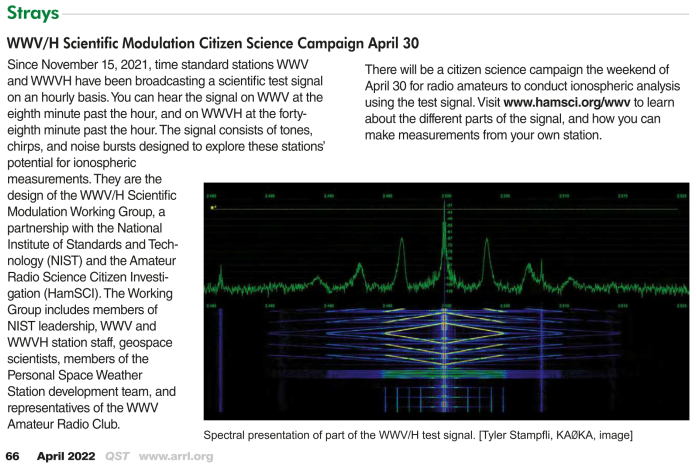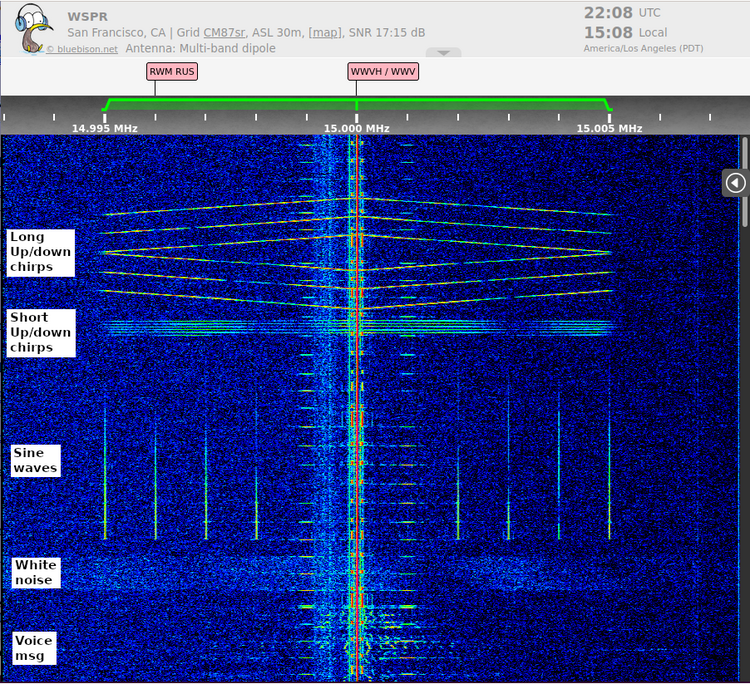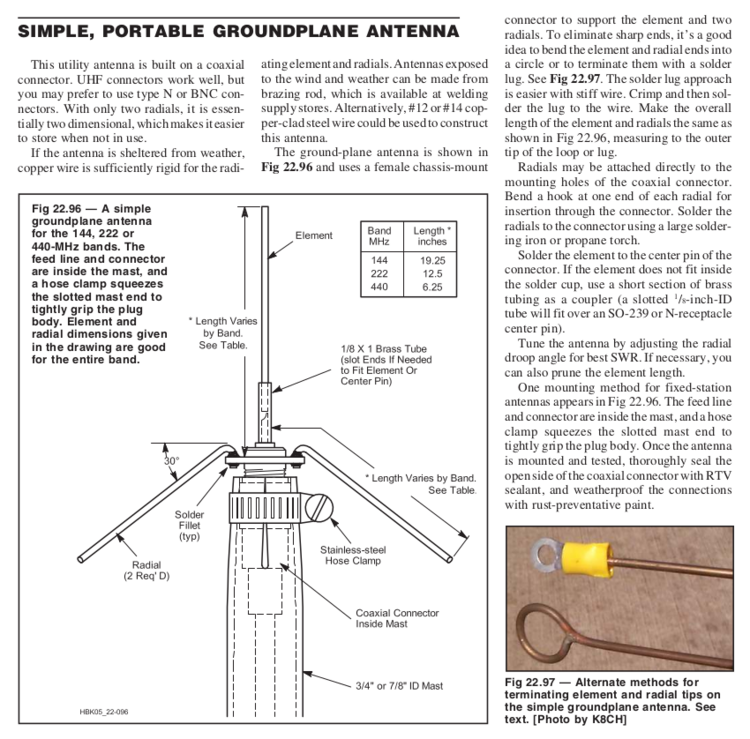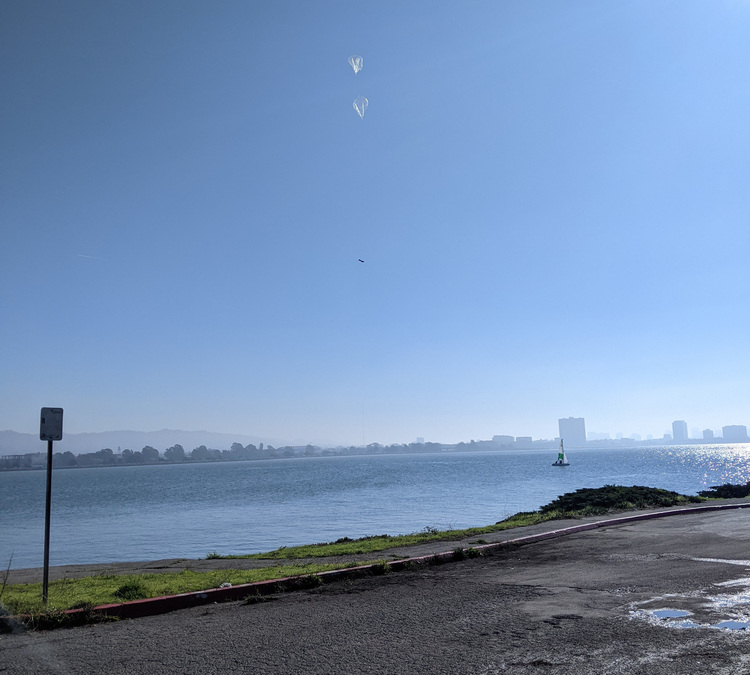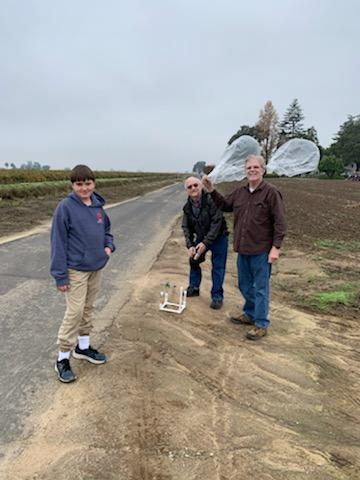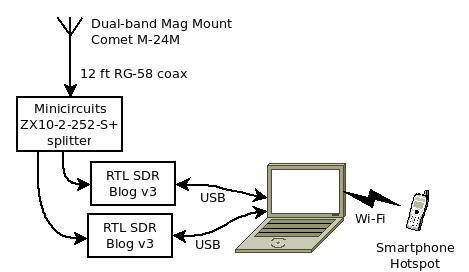I'm planning on participating in the Sunrise Festival, which is a citizen science campaign run by the HamSCI group. Over the 30 April 2022 weekend, hams from all over North America are encouraged to record the WWV and WWVH Scientific Test Signal, transmitting at 8 and 48 minutes past the hour.
I previously used my KiwiSDR to receive these signals, and luckily there is an easy API for the KiwiSDR that will allow us to save recordings from the SDR.
kiwirecorder.py
kiwirecorder.py, written by John Seamons ZL/KF6VO, is a simple python program that remotely connects to a KiwiSDR and saves spectrum locally. The output file can be demodulated audio (SSB or AM) like you get from a traditional radio, or raw IQ files which are spectrum recordings. We are much more interested in these raw IQ files, as any type of demodulation (such as AM or FM) removes information from the recording.
To check out kiwirecorder in your home folder with git clone https://github.com/jks-prv/kiwiclient. I'm running this on a standard Ubuntu 20.04 ...
